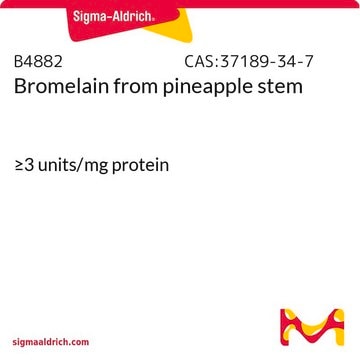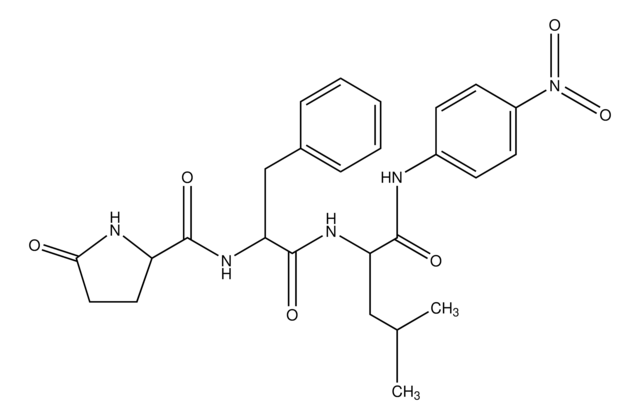F4125
Ficin from fig tree latex
saline suspension, ≥1.0 units/mg protein (biuret)
Synonym(s):
Debricin, Ficain, higueroxyl delabarre
About This Item
Recommended Products
biological source
fig tree (latex)
form
saline suspension
specific activity
≥1.0 units/mg protein (biuret)
mol wt
23.8 kDa
storage temp.
2-8°C
Looking for similar products? Visit Product Comparison Guide
General description
pI: 9.0
application
- in the electron paramagnetic resonance (EPR) and steady-kinetic measurements for assessing its peroxidase functionality
- for the digestion of eye tissue sections prior to immunostaining and immunofluorescence
Biochem/physiol Actions
Unit Definition
Physical form
Preparation Note
Substrate
inhibitor
signalword
Danger
hcodes
pcodes
Hazard Classifications
Resp. Sens. 1
Storage Class
12 - Non Combustible Liquids
wgk_germany
WGK 1
flash_point_f
Not applicable
flash_point_c
Not applicable
ppe
Eyeshields, Gloves, type ABEK (EN14387) respirator filter
Certificates of Analysis (COA)
Search for Certificates of Analysis (COA) by entering the products Lot/Batch Number. Lot and Batch Numbers can be found on a product’s label following the words ‘Lot’ or ‘Batch’.
Already Own This Product?
Find documentation for the products that you have recently purchased in the Document Library.
Customers Also Viewed
Protocols
This procedure may be used for all Ficin products.
Our team of scientists has experience in all areas of research including Life Science, Material Science, Chemical Synthesis, Chromatography, Analytical and many others.
Contact Technical Service














